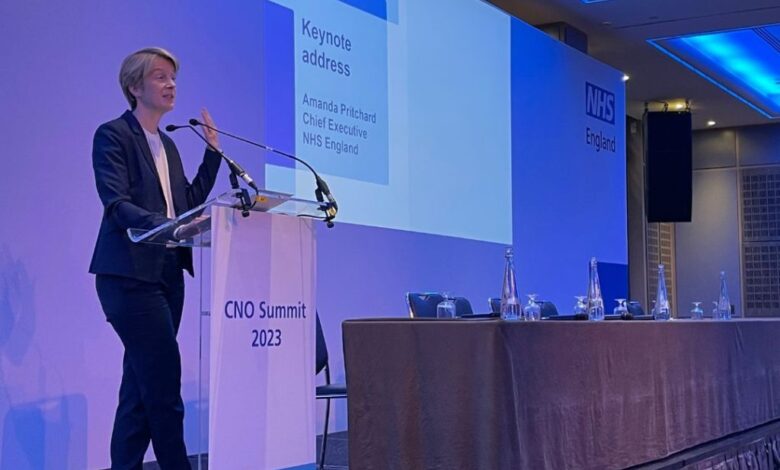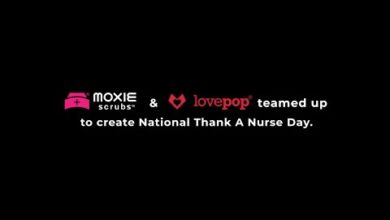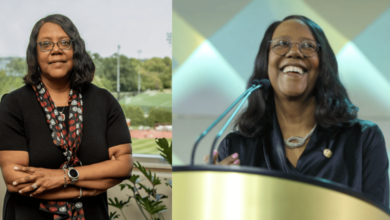NHS boss warns of ‘difficult’ financial choices due to strikes

The head of NHS England has spoken about her optimism for the future after a “tough year for the nursing family”, but warned of a tricky winter ahead and of the financial impact of strikes.
Amanda Pritchard said “difficult choices”, nationally and locally, must be made to balance the books for the health service, claiming that a year of industrial action had been “costly”.
“I do not think [these challenges] are insurmountable”
Amanda Pritchard
Speaking at the annual summit of chief nursing officer (CNO) for England Dame Ruth May yesterday, she told nurses of her belief that there was light at the end of the tunnel, promising that pledges around nursing recruitment and retention, made in the NHS workforce plan, remained a priority. As, Ms Pritchard said, was the recovery plans put in place in the wake of the Covid-19 pandemic.
On industrial action, Ms Pritchard said she hoped ongoing pay disputes in the NHS would be resolved before winter fully hit the NHS.
“In the NHS, you will know that [industrial action] has been incredibly difficult. It’s also been costly. I mean, literally, financially costly,” said Ms Pritchard.
However, she added: “I welcome clarity from the government about how they would like us to deal with the costs of industrial action.
“We have been able to release hundreds of millions of pounds to systems that will allow colleagues to prioritise safety, patient safety, and also prioritise urgent and emergency care over winter.
“Even so, we are going to have to make some difficult choices, and that is both nationally and locally, to balance the books.”
She said, however, that she had faith the NHS would rise to the challenge, adding that while demand had skyrocketed, the number of patients being seen across all sections of the health service in the past five years had also increased.
“My key message is I do not think [these challenges] are insurmountable,” she said.
She also stressed that she was not going to “hide behind” industrial action as a reason for all the challenges facing the NHS.
“I want to be really clear that we must not hide behind that, I’m certainly not hiding behind it,” said Ms Pritchard.
“There were challenges before industrial action, and there will still be challenges if it is resolved.”
Meanwhile, Ms Pritchard referred to the publication of the NHS Long Term Workforce Plan, in the summer, as a “seminal moment in the history of the NHS”.
She said: “It was the first time any government asked the NHS to produce a comprehensive workforce plan, setting out how many people the NHS will need, and the cost of training them.
“It is a once in a generation opportunity to put staffing on a sustainable footing. In taking that opportunity, we’ve made a real statement of ambition, about our future, a future in which we already know that demographic change, and therefore increased demand for care, is baked in.
“And in securing government backing for the plan, we secured an important vote of confidence in the NHS, in what we want to achieve and our ability to achieve it.”
“It is a once in a generation opportunity to put staffing on a sustainable footing”
Amanda Pritchard
She thanked those present at the CNO conference, which included senior nurses from across the country, for their role in pushing for the plan, and helping to shape it.
“The publication of the plan was a major achievement, but was just the beginning,” Ms Pritchard added.
“We worked together to design it, and we obviously have to work together to deliver it.
“The new training places, routes and roles will be really important in the future and the work is underway to deliver them now.”
In her view, retention was a crucial part of succeeding in the goal of expanding the workforce, as laid out in the plan.
“We all need to make sure we’re putting our foot on the gas when it comes to retention,” said the chief executive.
“It will improve the working lives of nurses, midwives and other staff. And, by extension, it will improve care to patients.
“There is plenty to do on retention, and it’s very clear in the plan we need to work on productivity, modernising our infrastructure and our physical estate.”
She pointed to the need to improve equipment used by nurses, and other NHS staff, including the digital and data infrastructure in trusts in England.
Part of this, she said, would include continuing to expand the use of the NHS app, and continuing to “strengthen” primary care.
“It’s been a tough year for the nursing family,” Ms Pritchard finished. “But I know you will keep on delivering for patients.”
Dame Ruth hosted a brief question and answer session with Ms Pritchard after her keynote speech.
The CNO asked Ms Pritchard what her specific ask is for senior nurses, in terms of delivering the goals of the NHS Long Term Workforce Plan.
Responding, the chief executive said she was pleased that the government had backed the plan with £2.4bn, and then added: “I would ask for that particular focus on retain.
“Because I think it’s what we can do for our colleagues now that is going to make the biggest difference over what is, I think, inevitably going to be particularly another hard winter, and then into next year.
“People have to have some hope that things will get better. The workforce plan does that because it shows us a path to a place where we will have enough staff with the right skills working together.
“But we’ve got to get between now and then. So that will be my particular ask of this group,”
Also at the summit, Dame Ruth launched her new “vision” for nursing and midwifery.
The plan set out seven priority areas for nursing: protecting our planet; prevention and reducing health inequalities; person-centred practice; public and patient safety; professional leadership and integration; people and workforce development; and professional culture.







